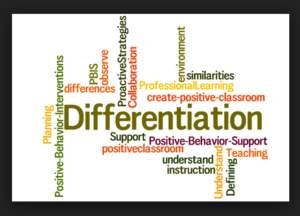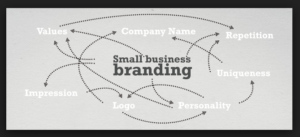Everyone has a unique style, don’t they? That includes leadership stories also. Here we will show that the most effective leaders have the ability to discover unexpected opportunities, share ideas in a way that gets other people excited, and surround themselves with smart, passionate people. We will accomplish this by sharing some great leadership stories and examples.
Let’s get started:
Go for better conversations
A strong leader is a great communicator – someone who’s both an inquisitive conversationalist and an engaged, active listener. Everyone wants to be heard, and etiquette coach and entrepreneur Jacqueline Whitmore says you can start connecting better by asking more open-ended questions, such as “Tell me, what did you enjoy the most about the conference?”
9. Employers Benefit Most When Every Hiring Candidate Has a Good Experience
There’s no doubt about it, looking for a job is stressful, whether you’re the job seeker or the manager who wants to find the right person for their team. Maintaining office morale starts with the first interview, and keeping the lines of communication and honesty open (with updates and feedback in both directions) goes a long way toward making the hiring process constructive for everyone.
Andrew Carnegie
Leadership Lessons
Andrew Carnegie proved to everyone the value of continual hard work in his life. His hard work caused him to be noticed by his superiors, who gave him promotions even at a young age.
In this world of instant everything, we need to fall back on the principle of continual hard work. Victory and success in life ONLY come through years after years of working hard. There are no shortcuts to success.
There are a lot of distractions nowadays with the advent of social media. Stories of people who seemingly become successful overnight can tempt anyone to succumb to the belief that lasting success can come instantly. You need to filter out these temptations and remind your team to work hard for their goals.
2. It’s not about what you know, but who you know
Andrew Carnegie understood the importance of this principle and he purposefully went all out to get to know people of prominence in his community whenever he had the chance. His connections ultimately brought him invaluable collaborations and partnerships for his business.
Your network is your net worth. While it is important to gain knowledge and skills for yourself, it’s even better if you can find somebody who already has all that and is willing to partner with you. Spend more time getting to know people within your industry and even without.
Connections will become an important resource for you either now or eventually.
3. Giving back
At age 33, Andrew Carnegie was already doing extremely well in his life, making USD$50,000 a year. However, he found emptiness in his life in his riches. It was then that he realized that a life lived for self was a very empty life.
As a leader, you need to understand that we live to become a blessing to the people around us. This includes the people you benefit through your organization. If you seek to succeed at the expense of others or seek to take and hoard, you’ll find yourself living a very empty life.
It is important, therefore, to live your life to give and to teach your team as well to live a life to give. With that attitude, you will succeed and become a leader of significance in your life.
8. Habits of the World’s Wealthiest People (Infographic)
There are more than 30 million millionaires on the planet. For those who want to join their ranks, it may be worth taking a peek at the activities they do regularly. Among them: exercise, eat healthily, read voraciously, and network, network, network.
7.9 Things Successful People Won’t Do
Feelings and emotions can affect our work in ways we don’t even realize. High-performing leaders understand that staying positive – not holding grudges, dwelling on problems, or spending time focusing on negative influences — is an integral part of setting and accomplishing their goals.
One of my favorite leadership-by-example stories is that of Mahatma Gandhi. How closely does what you say as a leader align with what you do? Read on… Here is another great story to share with other leaders. May we all be better leaders as we lead by example this coming year.
In the 1930’s there was a young boy who had become addicted to and obsessed with eating sugar. His mother decided to get help and took the long and hot journey with her son walking many miles and hours under the scorching sun.
She finally reached Gandhi and asked him to tell her son to stop eating sugar, it wasn’t good for his health. Gandhi replied, “I cannot tell him that. But you may bring him back in a few weeks and then I will talk to him.” The mother was confused and upset and took the boy home.
Two weeks later she came back. This time Gandhi looked directly at the boy and said “Boy, you should stop eating sugar. It is not good for your health.” The boy nodded his head and promised he wouldn’t. The boy’s mother was puzzled. She asked, “Why didn’t you tell him that two weeks ago when I brought him here to see you?”
Gandhi smiled and said, “Mother, two weeks ago I was eating a lot of sugar myself.”
Wow!
– See more at: http://www.teamworkandleadership.com/2011/01/my-favorite-leadership-by-example-story-ever-powerful.html#sthash.pVePBy0K.dpuf
6. Successful Entrepreneurs Do These 5 Things Daily
We have all experienced failure, but career consultant Meiko Patton says that there are ways you can learn from these obstacles and channel them into something even more fulfilling. Patton says that disciplined leaders who aren’t afraid to fail, and who take time to recharge and help others are well on their way to long-term success.
5. 50 Signs You Might Be an Entrepreneur
Are you hardworking, driven, competitive, collaborative, imaginative, a people person, or a problem-solver? Then you may just be an entrepreneur.
Steve Jobs
Leadership Lessons
- Persistence is the key
Steve Jobs was a very persistent person and it was most exemplified through his exit from Apple. He would not give up but went on to start NeXT computers which would eventually be acquired by Apple Computers Inc.
If Jobs were like most people, he would have given up and spent the rest of his life being bitter about his loss. Instead, his success brought him back into the doors of Apple and eventually he led Apple to an unprecedented level of success.
As a leader, you have to be ready to face setbacks. Setbacks are a part of life and whether you become successful or not often depends on your ability not to give up. It is all the more important to display this attribute, especially if you want to build a never-say-die team.
2. Innovation brings leadership
Jobs saw the power of innovation in building his company. Till today, we can see the innovative power of Apple Computers Inc as it continues to take market leadership in the industry through the iPhone and iPad.
If you want to maintain your leadership in the industry, you have to be the one who’s constantly up with new ideas, and new initiatives, all in the spirit of moving your organizational mission forward. In whatever industry you’re in, your constant innovation in alignment with your mission will keep you ahead of the pack.
4. Is Your Brain Limiting Your Entrepreneurial Success?
It’s human nature to look for patterns – and to only see what we want or expect, from our past experience. But an innovative leader is always on the lookout for new opportunities and prospects and points of view, wherever they go.
Walt Disney
Leadership Lessons
1. Never stop dreaming
Walt Disney was a dreamer. He never stopped trying out new things, creating new cartoons no matter how successful he was already. He never became complacent that he stopped innovating.
You must also never stop innovating and dreaming about new possibilities; the possibilities are only limited by your imagination. The same desire for innovation is also the same desire to continually learn and grow to become better.
2. Keep on keeping on
Disney suffered many setbacks in his career. Most of us would like to believe that Walt Disney just thought of creating Mickey Mouse one day and became an overnight success, but a quick read of his biography will have you realize that Disney went through many discouraging moments before his success with Mickey Mouse, which happened about 10 years after his first attempt at a business.
You need to have a tenacity to keep on going. Every person will go through tough times, especially when he/she’s chasing after a huge dream or goal. But is your tenacity that will cause you to stand out from the rest and attract people to follow you.
3. You’ll Never Hear Successful People Say These 15 Phrases
If you’re building a new company, take phrases like “I don’t know what that is,” “I did everything on my own,” or “If our competitors don’t have it, then we don’t need it” out of your lexicon. Successful entrepreneur knows they can’t go it alone – and that there is always something new to learn.
2. The SEAL Teams Don’t Accept These 10 Phrases, and Neither Should You
To run a tight ship, you can’t go wrong by taking a page or two out of the SEAL Team playbook. Hold yourself and your team accountable and be decisive – which means you should avoid saying something like “Let’s hold off on this issue until the next meeting,” or “I can’t do that.”
1. Chart Goals to Create a Road Map to Your Success
Don’t be intimidated by the scope of your idea – create smaller checkpoints that build up to your bigger achievement. Resilient leaders push themselves to accomplish their goals but allow some room to change or improvise as they go.



